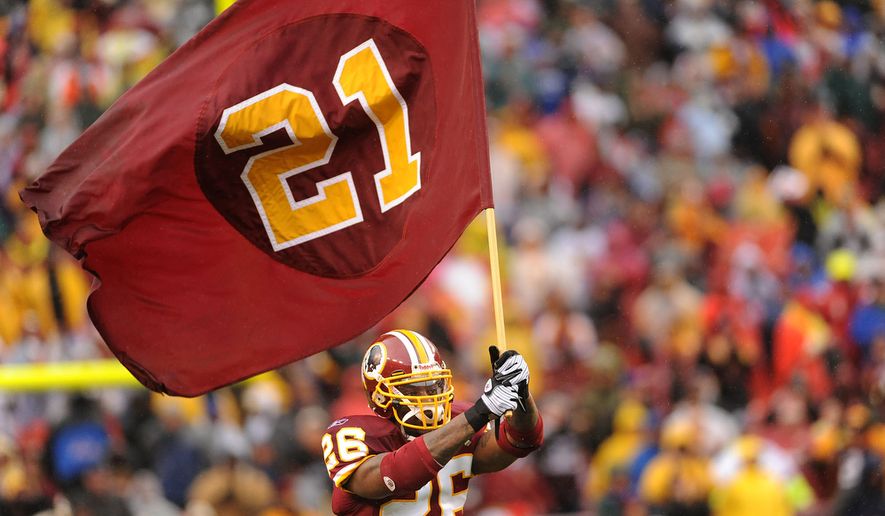ANALYSIS/OPINION:
When the Tampa Bay Buccaneers hosted Washington on Nov. 25, 2007, I covered the game as a sports columnist for The (Fort Myers, Florida) News-Press. One of the best things about writing for The News-Press — which I did from 2000-09 — was being equidistant from Tampa and Miami, which meant regular coverage of the Bucs, Dolphins and “The U.”
The Bucs had two Fort Myers natives on the field that day, halfback Earnest Graham and cornerback Phillip Buchanon — who later played for Washington. On the visitors’ sideline were two players I covered at the University of Miami, wideout Santana Moss and halfback Clinton Portis.
But a third former Hurricanes player didn’t take the field for Washington and he didn’t accompany the team on its flight back home.
The decision to stay in Florida ultimately cost Sean Taylor his life.
Taylor was shot during a botched burglary attempt by some Fort Myers thugs and died the next day. “Fort Myers scoundrels” is the way journalist Amy Shipley described the killers in the documentary, “Sean Taylor: A Football Life,” which aired last week on NFL Network.
She’s absolutely correct.
But in “Fourth Down in Dunbar,” a new book released earlier last week, author and former colleague David Dorsey offers a deeper look at the relationship among football, felons and Fort Myers, particularly the black part of town referenced in the title.
Though the timing of the documentary and the book are coincidental, Dorsey hopes that people who watched the show also read his work to “find out more about the forces that shaped the young men” who traveled across Alligator Alley and killed Taylor that night.
Those same forces helped shape a slew of NFL players, too.
Graham and Buchanon grew up in Dunbar, down the road from Eric Rivera Jr., who was sentenced to more than 57 years in prison earlier this year for his involvement, along with four others, in Taylor’s death. The childhood home of Buffalo Bills wideout Sammy Watkins, the No. 4 pick in the 2014 draft, is a 10-minute drive from Rivera’s house.
The poverty-stricken, crime-ridden, drug-infested neighborhood of Dunbar — home to 20,000 residents in 2010 — also produced former defensive end Jevon Kearse, a three-time Pro Bowler; former defensive back Anthony Henry, who led the league in interceptions (10) as a rookie in 2001; Baltimore Ravens nose tackle Terrence Cody, a two-time consensus All-American at Alabama; a number of other NFL players who enjoyed at least a modicum of success; and Fort Myers’ Greatest Of All-Time: Hall of Famer Deion Sanders.
“Eric Rivera Jr. would not have been in that car on the way to burglarize Sean Taylor’s house that night if he was a really good football player,” Dorsey said in a phone interview. “There would’ve been more people around him, nurturing him and trying to steer him in the right direction. Not everyone gets to make it, but they all come from the same place.”
Fort Myers was deemed the South’s most segregated city in a 1997 University of Michigan study. The News-Press, where Dorsey has been a sportswriter for 20 years, profiled Dunbar’s zip code in 2010 and found an unemployment rate of 30 percent (more than double Lee County’s rate of 12.7 percent). One-third of the neighborhood’s adults 25-and-older didn’t graduate from high school, and the average income hovered just above $16,000 per year.
Like many places with similar socioeconomic demographics, Dunbar was ravaged by the drug trade in the 1980s. All of the future NFL players who made it have friends and/or relatives who either succumbed to using drugs or were lured by the fast money in selling them.
Law enforcement officials told Dorsey that Dunbar’s crack cocaine was among the nation’s “cruelest,” making the neighborhood a hub for the southeastern United States. Dorsey reports that about $100,000 in cash changed hands daily in the mid-1980s. Ronnie Lee Tape, an area kingpin, estimated that he made about $20,000 per day in 1985.
When Tape was sentenced to 30 years in prison in 1989, others stepped in to fill the void, including Eric Rivera Sr. The younger Rivera grew up visiting his father in prison. But it wasn’t enough to keep the 17-year-old from hopping in a car with friends and driving to Taylor’s house on that fateful November evening.
The city’s connection to the NFL took a tragic turn shortly thereafter.
That part of the story must be told, but it’s not the reason Dorsey wrote his book.
“I want the country to know about Fort Myers and the history we have here and our contribution to the NFL,” Dorsey said. “Like (the area’s most famous snowbird) Thomas Edison said, ’There’s only one Fort Myers and 90 million people are going to find out about it.’ He said that in 1914.”
One hundred years later, people are still learning.
• Deron Snyder can be reached at deronsnyder@gmail.com.




Please read our comment policy before commenting.